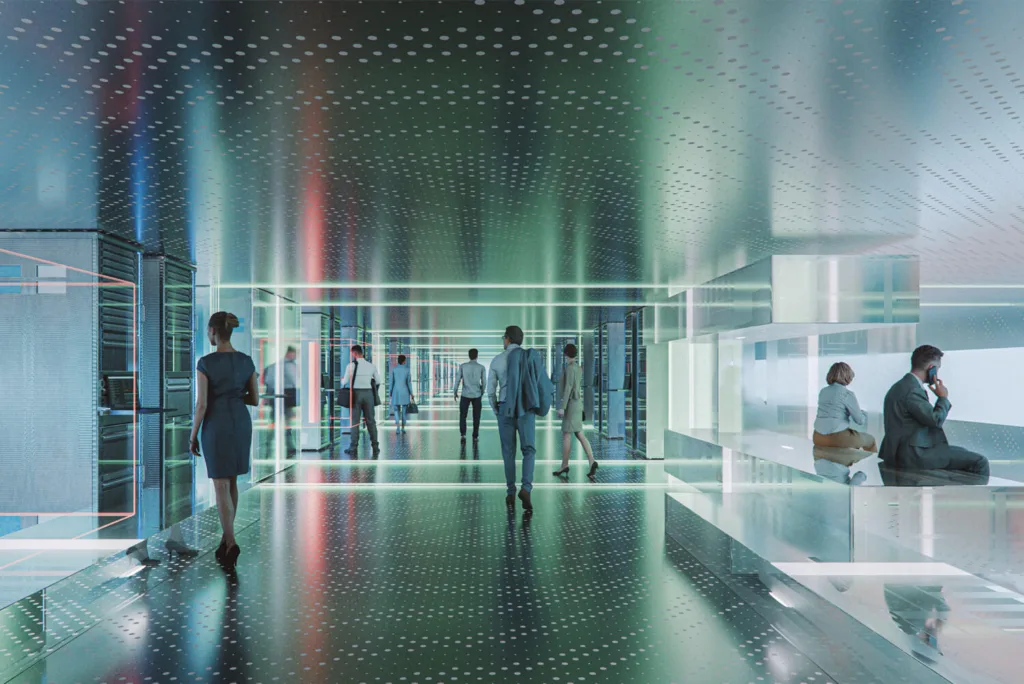A recent wave of high-profile layoffs has led some industry pundits to conclude that the war for tech talent – once red-hot – is now over, with the balance of power shifting back into the hands of employers. Still, while the tech industry may be pivoting from the high-flying times of 2021 and 2022, research actually shows that demand for tech workers is still sky-high, with 95% of employers reporting a shortage of tech employees sometime in the last year. That’s the kind of deficit that doesn’t go away overnight, even as more engineers, designers, and other tech professionals start to hit the job market.
So, while the Great Resignation is probably over, the war for tech talent is still very much on. That’s why, in this blog, we’ll look at 4 practical tips to help you attract and retain the industry’s best this year and beyond.
1) User-test the office to improve employee satisfaction
At most tech companies, user testing is an essential part of the product design process. Product and UX/UI designers, UX researchers, and other professionals frequently test the effectiveness of their outputs to make sure that the product is serving the user in the most effective way possible. Without user testing, it would be much harder to proactively identify and resolve any points of friction that might exist between the user and the company’s product. That’s why user testing is such a critical part of the design process.
As the war for tech talent continues in 2023, some tech companies have started to “user test” their offices to better understand and resolve points of friction between employees and the places where they work. This can include minor initiatives like push polls or email surveys to gauge employee preferences. It could also include major overhauls of office space or large-scale office shutdowns to help measure the effectiveness of certain amenities in a more controlled environment.
You test your software to improve the user experience – why should your offices be any different? By measuring employee preferences on an ongoing basis, you put yourself in a position to proactively resolve issues that might affect employee satisfaction.
2) Build stronger workplace connections to retain top talent
According to the 2023 State of Workplace Experience report, the importance of informal social interaction rose by about 8% after the start of the COVID-19 pandemic. No other popular workplace activity saw a greater increase in importance over the same period.
This points to a fundamental shift in the way that employees interact with and view office space. While the office was once thought of as a place for doing quiet, individually-focused work, the data shows us that today’s employees view the office as a hub for connection and collaboration. Today, employees visit the office not just to do work, but also to interact with other employees, whom they see as friends and valued coworkers.
By enabling stronger connections through regular events programming, an innovative speaking series, or new workplace wellness options, you can help strengthen your employees’ connection to your company. This makes them more likely to be productive, and less likely to leave before it’s time.
3) Increase engagement with improved access to leadership
There are more employees in offices today than there were in the years immediately following the start of the COVID-19 pandemic. This is music to the ears of many workplace decision-makers, who’ve wanted to see employees back in the office for quite some time. But even as employees return to work in greater numbers, leaders still need to do more to boost innovation, collaboration, and engagement in the workplace. This is particularly true of the technology sector, where remote work is more common than the economy at large, and concerns about productivity and engagement have continued to linger.
To keep employees active and engaged, leaders at tech companies should consider improving access to one crucial workplace amenity – themselves. By ensuring that they’re visible and accessible to their employees, managers and C-suite leaders can help employees feel connected to their company’s core purpose. They can also help employees feel that their work is being noticed and valued. Increased presence from leadership can also make it easier for workers to express key concerns that might otherwise go unaddressed. All of this makes it easier to attract and retain employees during a difficult time in the market.
4) Attract top candidates with an employee-centric workplace
To attract the right candidates for their organizations, a growing number of tech leaders are implementing “employee-centric workplaces” – workplaces that prioritize the needs of employees to help boost satisfaction and productivity.
To build an employee-centric workplace, it’s important to first understand and evaluate all friction points in the employee experience journey. One way to do this is through workplace “journey mapping”, where leaders map out the employee’s entire day in order to identify emotional, cognitive, and interaction friction points that make it hard to get work done. This helps leaders identify points of conflict that could discourage employees from coming to the office and being productive.
Once that journey mapping is complete, leaders have to implement technological tools to help eliminate those points of friction. By addressing all employee needs through a single app and platform, workplace experience technology like HqO gives workplace leaders a comprehensive solution to help them meet their business goals. Learn more by downloading our new industry guide, which features proprietary research from Leesman, an HqO company.
To Weather Uncertainty, Build a Better Workplace Experience
As the future of the workplace continues to evolve, companies can insulate themselves from macroeconomic uncertainty by building stronger and better-connected workplaces. HqO equips employers with practical tools that improve the workplace experience, which leads to decreased turnover, higher retention, and increased productivity over time. By delivering engaging events, exciting programming, and a wide array of practical tools to our customers, HqO helps make the workplace a more human and connected place. And, in 2023, that’s exactly what employees need.
Want to learn how HqO can help you meet your business goals? Request a demo today.



